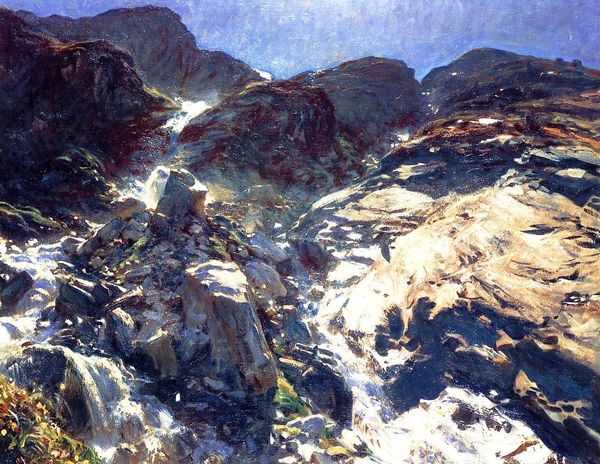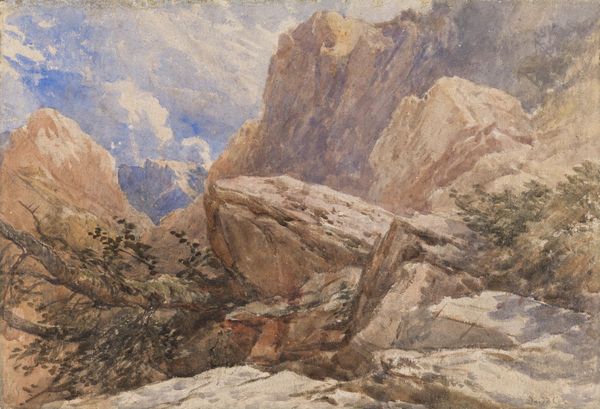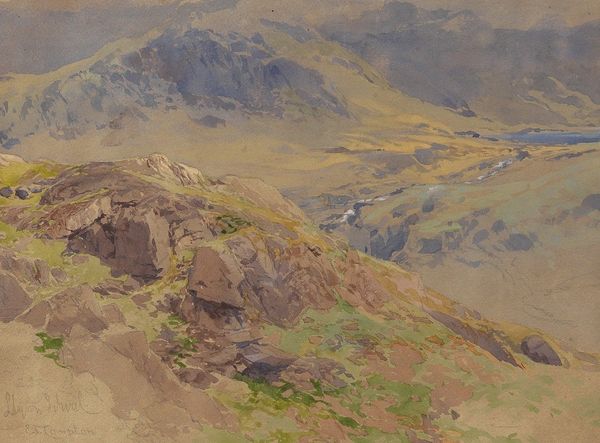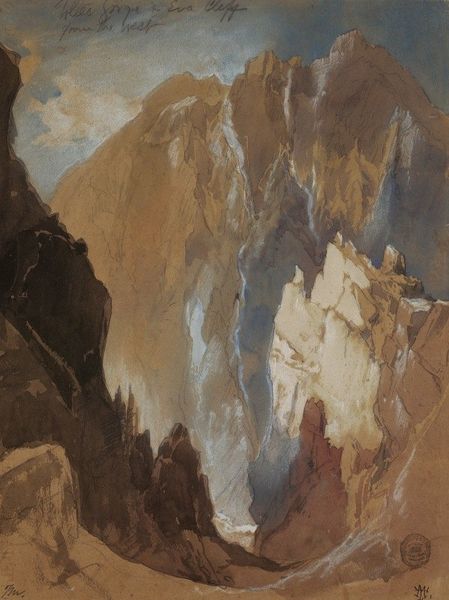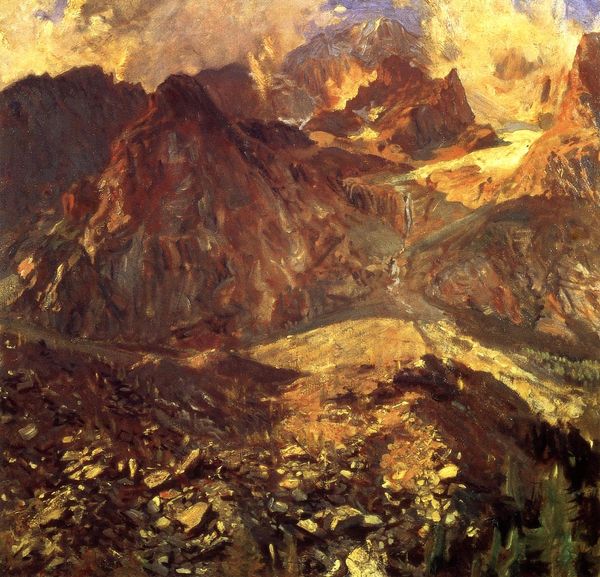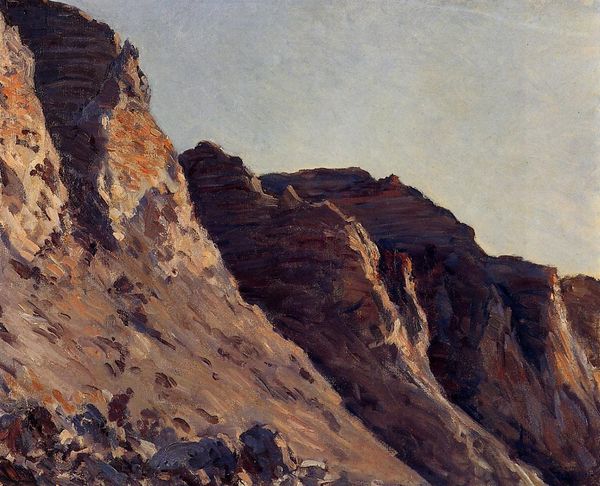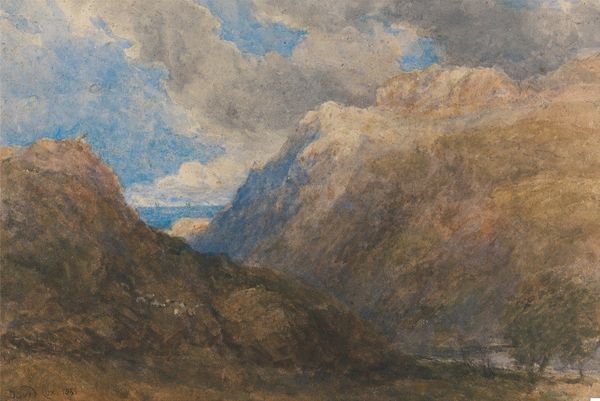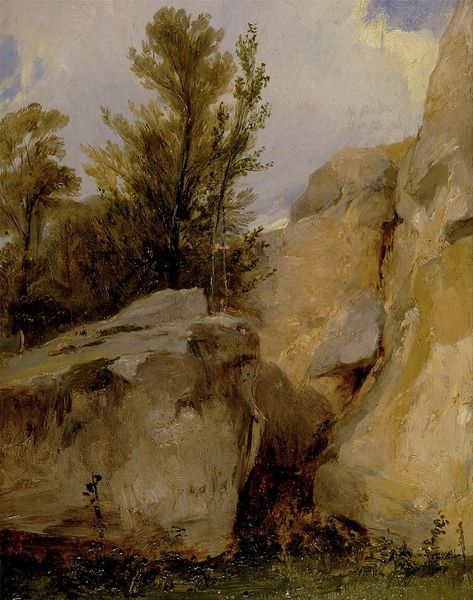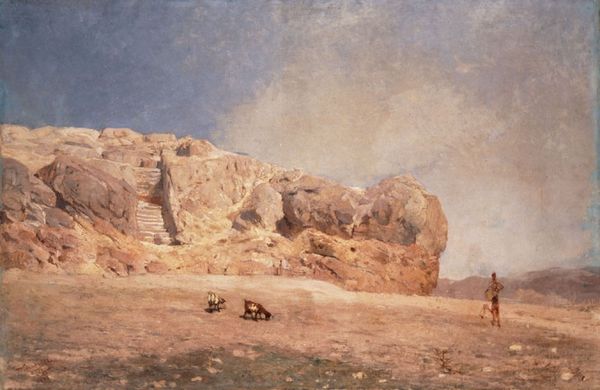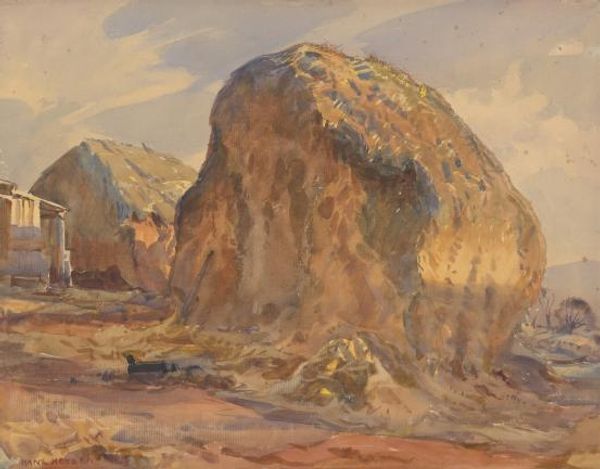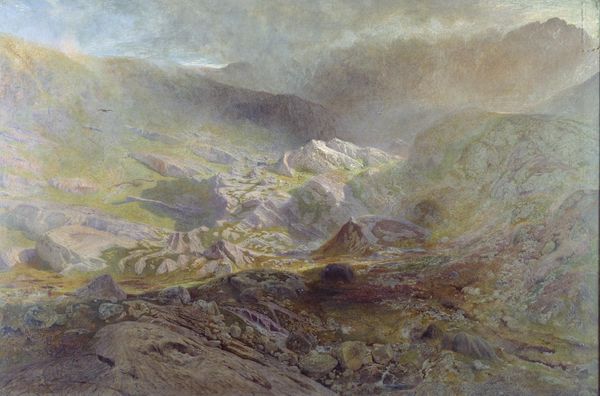
Copyright: Public Domain: Artvee
Editor: Here we have Edward Theodore Compton's "Hochgebirgsstudie" from 1870, rendered in oil paint, presumably en plein air. The sheer density of rock and the light playing on its rugged surface gives a sense of monumental scale and geological time. What catches your eye, what strikes you most about the artist's execution here? Curator: The immediate observation focuses on Compton's masterful deployment of texture. Notice the strategic impasto; the thick application of paint mimics the ruggedness of the mountain face, creating a tactile quality. Note, too, how light and shadow are not simply representational but structurally integral. The interplay defines form, carving volume out of the two-dimensional plane. How might we consider the formal properties as separate to what they signify? Editor: So you're suggesting that the visual components are significant in themselves? That the texture and light aren't just depicting a mountain, they're *doing* something? Curator: Precisely. Consider the composition: a carefully orchestrated arrangement of light and shadow that guides the eye. Observe the chromatic scale, primarily earth tones but interspersed with delicate hints of cool light that suggesting atmosphere. Could it be the composition mimics that of other structures in the human experience? What might that connection be? Editor: Hmm... It reminds me of gothic architecture actually, the way the light seems to imply great heights. Curator: An astute observation! This lends an almost spiritual quality to the landscape, does it not? This structural dynamic moves beyond the pictorial. Editor: That makes me rethink the Romanticism tag. It's less about dramatic emotion and more about... the inherent grandeur expressed formally. Curator: Indeed. It transcends simple representation and offers an immersive visual experience via careful composition and attention to form. Editor: That really changes my understanding of landscape painting, focusing on structure more than scenery! Curator: It invites a deeper reading beyond subject matter; a celebration of inherent visual and structural elements.
Comments
No comments
Be the first to comment and join the conversation on the ultimate creative platform.
